Welcome to the enchanting world of purple succulents, where nature unfolds a kaleidoscope of royal hues, captivating textures, and unique botanical stories. In this comprehensive guide, we embark on a journey through the vibrant realm of succulents painted in shades of purple, discovering the diverse array of these botanical gems that transform ordinary gardens into extraordinary landscapes.
Purple succulents, with their alluring colors, are not just plants; they are living artworks that add a touch of sophistication and mystery to any outdoor space. From the majestic Aeonium Arboreum to the delicate Lilac Mist, each succulent has its own tale to tell, turning your garden into a canvas of nature’s artistic expression.
Join us as we delve into the intricacies of 12 remarkable purple succulents, exploring their unique characteristics, ideal planting environments, and tips for nurturing their beauty. Whether you’re a seasoned gardener or just beginning to cultivate your green haven, this guide is your passport to unlocking the secrets and allure of these botanical treasures. Let the exploration begin!
Table of Contents
What Makes Purple Succulents Special?
Succulents, known for their ability to thrive in arid conditions, take on a magical quality when adorned in shades of purple. The deep, rich tones add a touch of mystique to your greenery, making purple succulents a sought-after choice for plant enthusiasts and seasoned gardeners alike. These botanical wonders stand as living testaments to nature’s versatility, transforming ordinary landscapes into vibrant tapestries of elegance and mystery. The allure of purple succulents lies not just in their stunning visual appeal but also in their ability to express individuality, making each garden a unique reflection of personal style and storytelling.
The Purple Palette: 12 Striking Varieties
1. Aeonium Arboreum
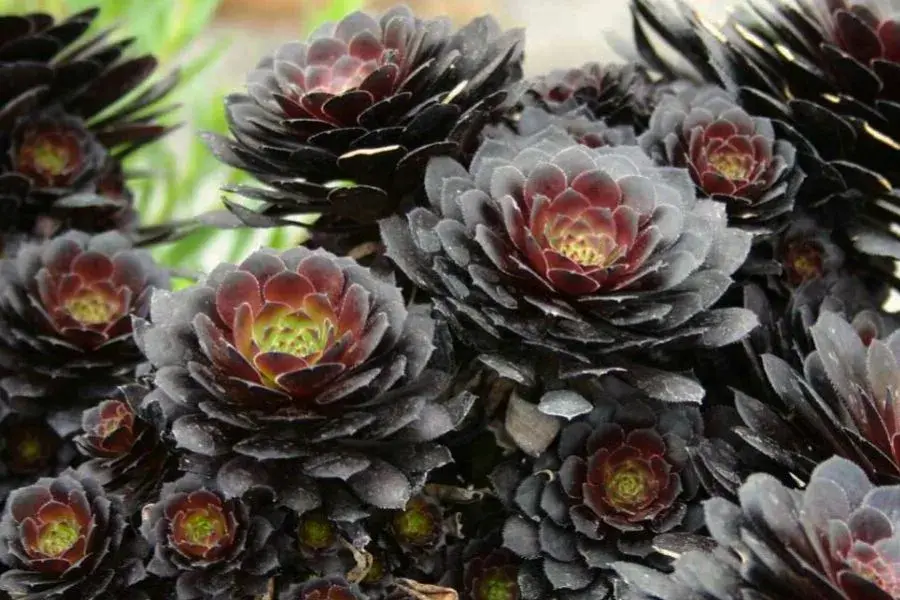
A true standout in succulent collections, the Aeonium Arboreum, commonly known as the Tree Houseleek, showcases a mesmerizing rosette structure reminiscent of a miniature tree. With leaves that transition from green to deep purple, this succulent becomes a focal point, adding architectural elegance to your garden. A lover of sunlight, the Aeonium Arboreum displays its richest hues when basking in full sun, making it an ideal choice for sun-drenched landscapes.
2. Santa Rita Prickly Pear
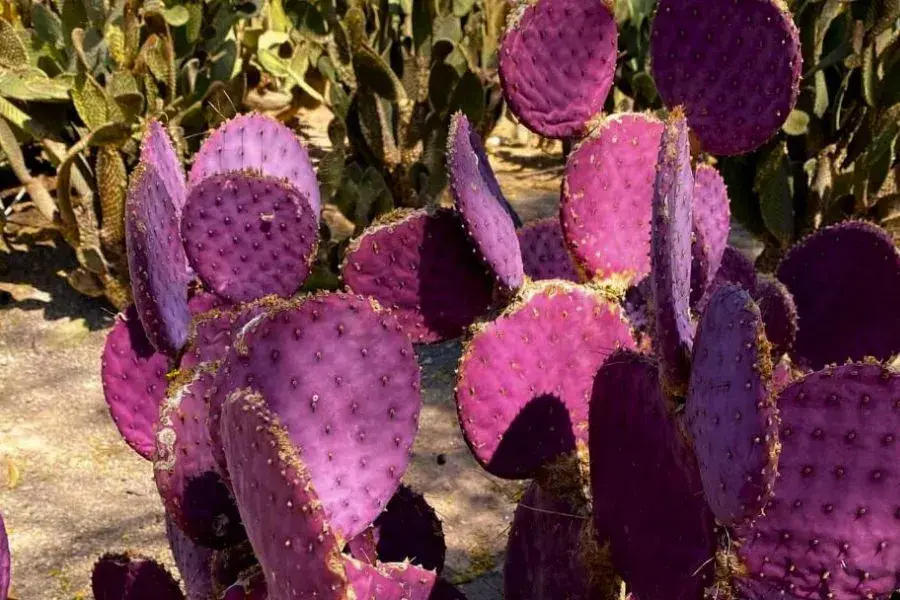
The Santa Rita Prickly Pear, a gem of arid landscapes, introduces a touch of royalty with its striking purple pads. Flourishing in the sun-soaked desert environment, this succulent not only survives but thrives, demonstrating resilience in the face of harsh conditions. Its vibrant color intensifies under the desert sun, creating a captivating display in rock gardens or xeriscapes.
3. Purple Beauty
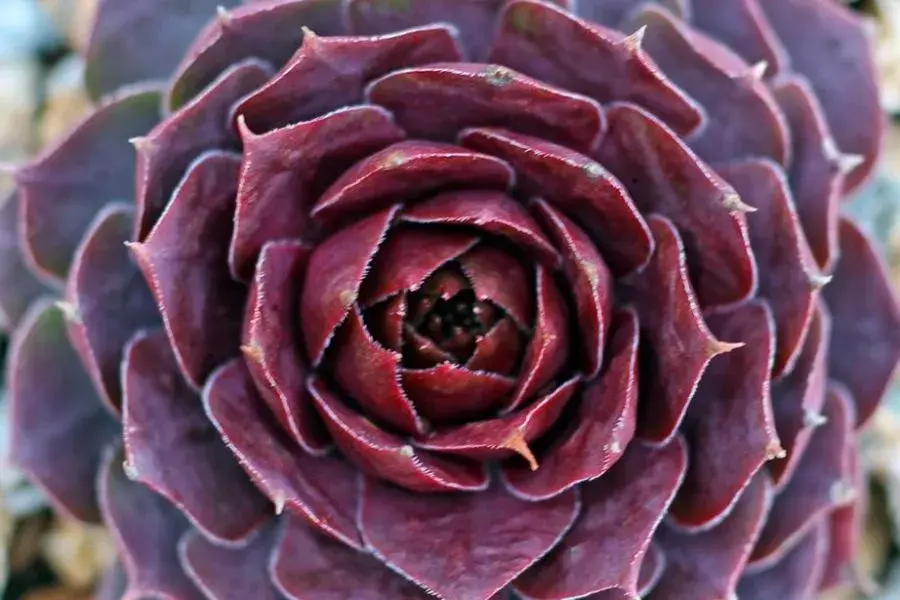
In the realm of succulent simplicity, Purple Beauty reigns supreme. With rosettes adorned in rich purple tones, this low-maintenance succulent embodies elegance. Its versatility allows it to seamlessly integrate into various garden designs, making it an excellent choice for both beginners and seasoned garden enthusiasts. Whether as a ground cover or a potted centerpiece, Purple Beauty adds a touch of sophistication to any setting.
4. Lithops Optica
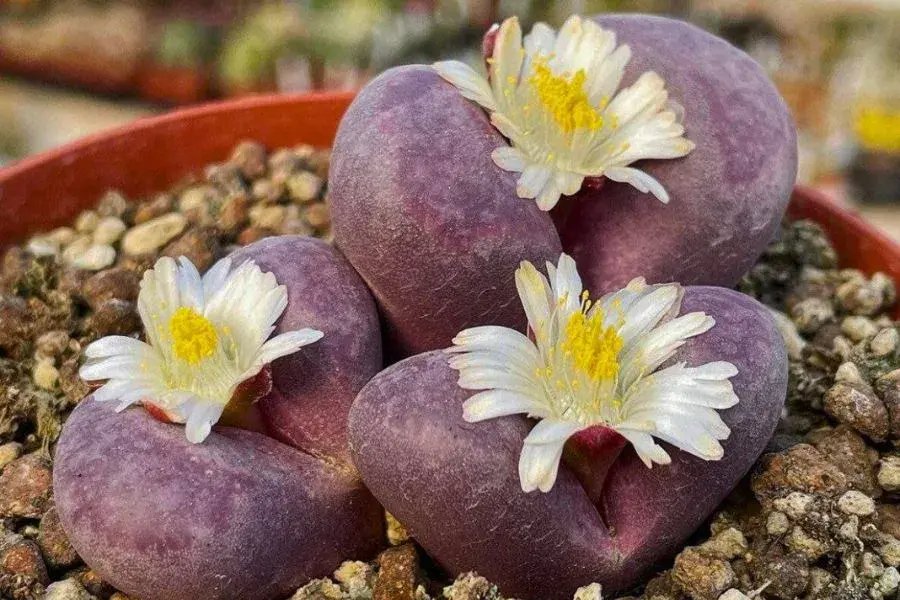
Lithops Optica, also known as the Living Stone plant, takes mimicry to a whole new level. Its purple-tinged leaves closely resemble pebbles, allowing it to blend seamlessly into its surroundings. This succulent’s adaptation strategy is not only fascinating but also adds an element of intrigue to your garden. Lithops Optica serves as a conversation starter, inviting curious observers to marvel at nature’s ingenuity.
5. Purple Haze
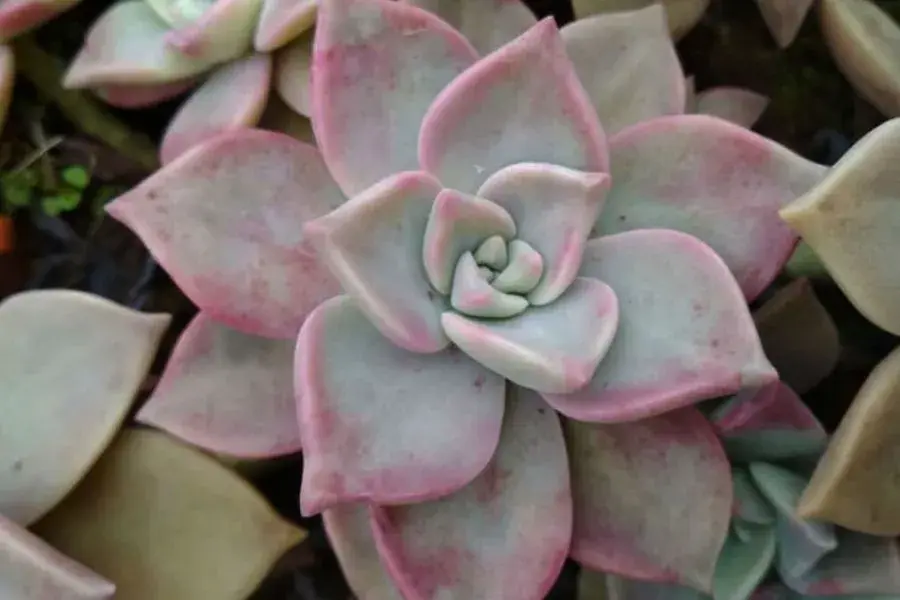
True to its name, Purple Haze infuses a sense of mesmerizing color play into your garden. With lavender-pink hues, this succulent creates an ethereal atmosphere, especially when paired with contrasting green varieties. Whether as a ground cover or nestled among rocks, Purple Haze introduces a dreamlike quality, turning your garden into a captivating haven of colors.
6. Sempervivum Heuffelii
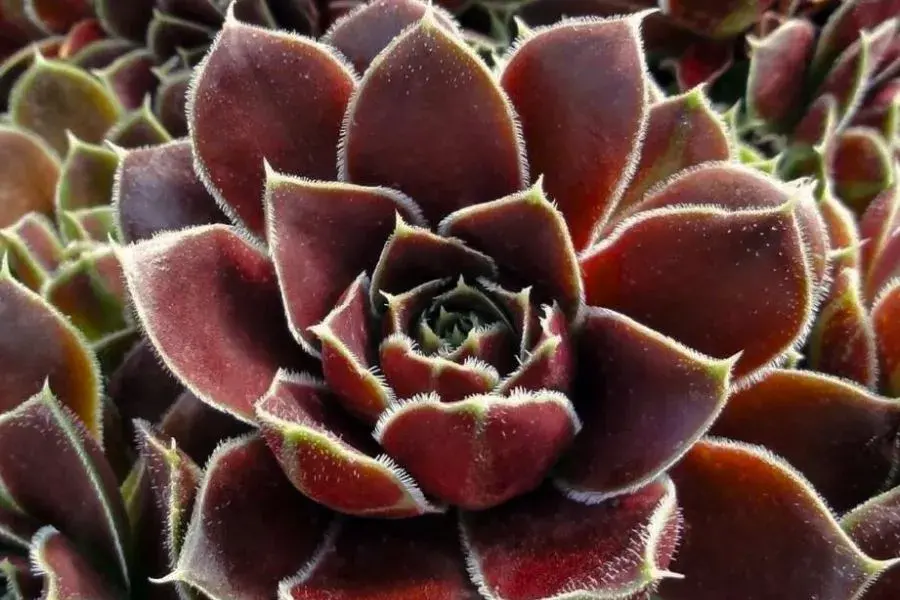
Sempervivum Heuffelii, part of the hens-and-chicks family, showcases clusters of tightly packed rosettes in shades of purple. Known for its hardiness, this succulent thrives in various conditions and climates. Its resilient nature makes it an ideal choice for gardeners seeking a low-maintenance yet visually striking addition to rockeries, containers, or alpine gardens.
7. Raspberry Ice
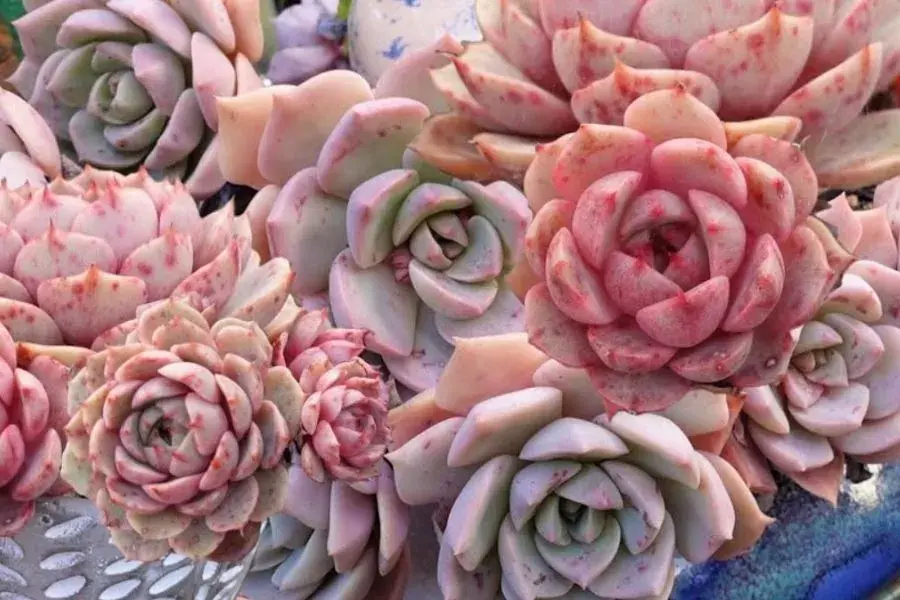
Raspberry Ice stands out as a succulent with cool elegance, featuring a delightful combination of purple and icy blue tones. This eye-catching variety, with its compact growth habit, becomes a sweet spectacle in container gardens or rockeries. Its subtle charm adds a refreshing touch, creating a visual oasis in your garden.
8. Lilac Mist
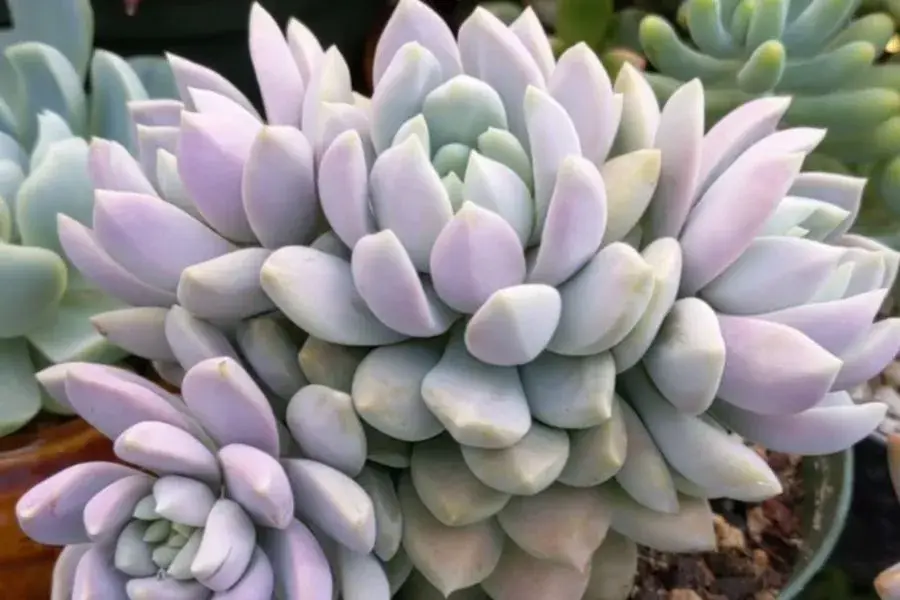
Lilac Mist adds a touch of soft elegance to your garden with its delicate rosettes in shades of lilac and lavender. What sets this succulent apart is its fine texture, creating a graceful focal point in various settings. Whether placed in pots, rock gardens, or as part of larger landscape designs, Lilac Mist introduces a sense of refinement and tranquility.
9. Sedum Dasyphyllum
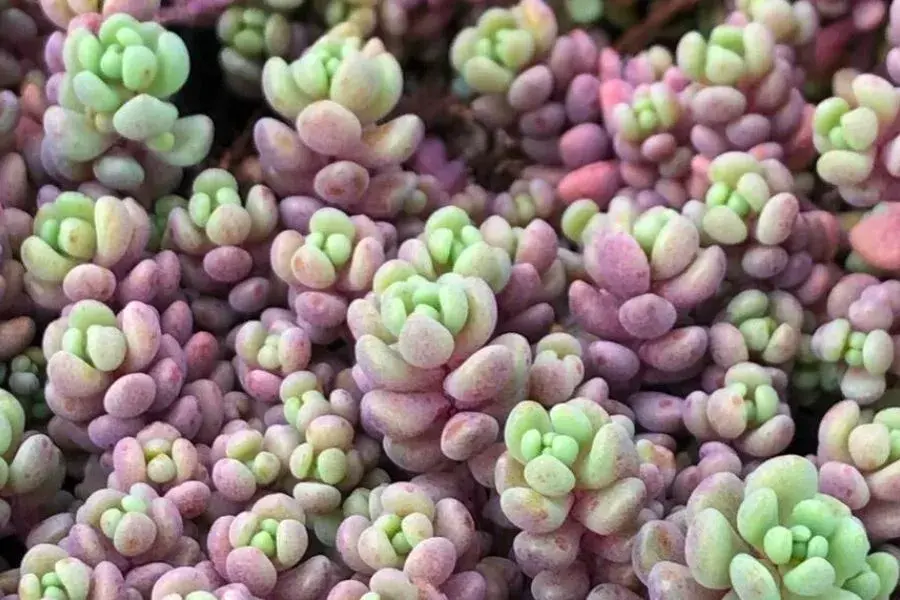
Known as Corsican Stonecrop, Sedum Dasyphyllum takes ground cover to new heights of delight. Its tiny, dense leaves create a lush carpet of purple, transforming barren spaces into vibrant displays of color. This versatile succulent is an excellent choice for those looking to add texture and visual interest to ground-level landscapes.
10. Neon Breakers
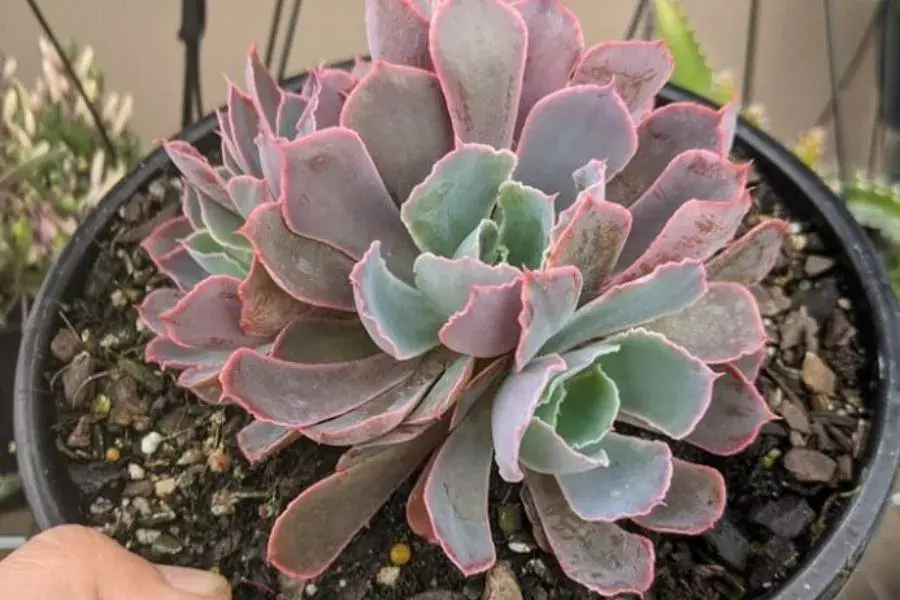
Neon Breakers, with its vibrant hues and striking contrast of purple and green, becomes an unforgettable addition to both indoor and outdoor arrangements. This succulent demands attention, making it a statement piece in containers, hanging baskets, or as part of succulent gardens. Its vivid colors create a dynamic and energetic atmosphere, leaving a lasting impression on anyone who encounters it.
11. Dark Beauty
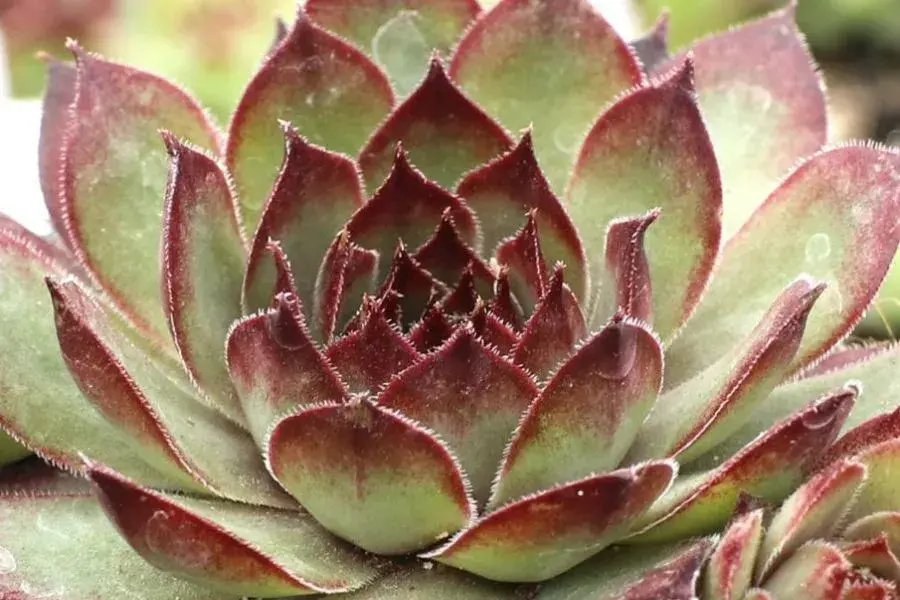
Dark Beauty, as its name suggests, introduces a sense of mystery with its almost black leaves tinged with shades of purple. This Echeveria variety becomes a brooding centerpiece, commanding attention with its contrasting elegance. Whether showcased in solitary pots or as part of mixed succulent arrangements, Dark Beauty adds a touch of sophistication and intrigue to your garden.
12. Echeveria Purple Pearl
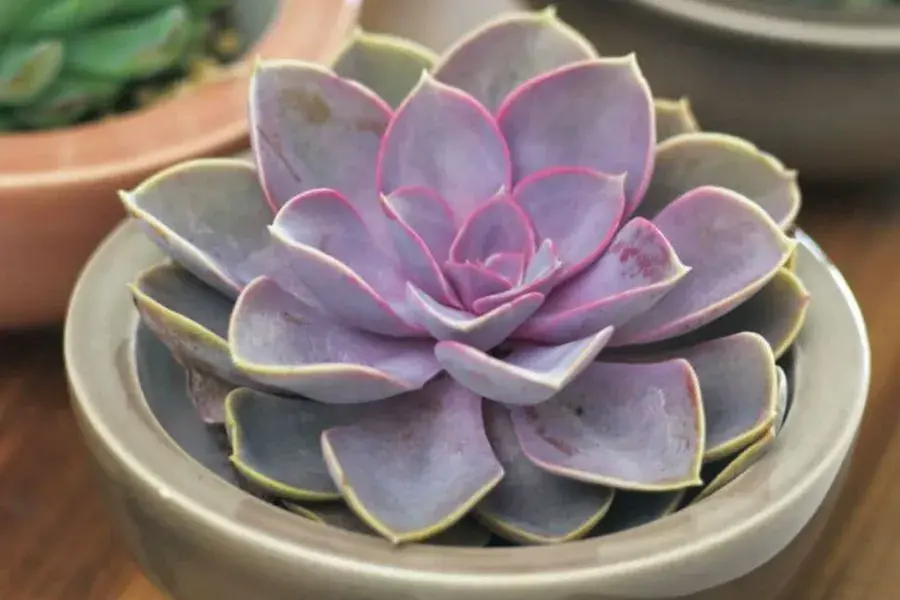
Closing our succulent showcase is the Echeveria Purple Pearl. Its pearlescent leaves, painted in various shades of purple, radiate a subtle yet enchanting glow. This succulent adds a touch of sophistication to any arrangement, making it an excellent choice for containers, succulent walls, or as part of your indoor garden. The Purple Pearl becomes a living jewel, reflecting the delicate radiance of nature.
Caring for Your Purple Succulents
As we embark on the journey of cultivating these botanical gems, it’s essential to understand that caring for purple succulents goes beyond the ordinary. Their striking beauty demands a balance of attention and respect for their innate resilience. Let’s delve into the art of nurturing nature’s elegance.
Light Requirements: A Dance with the Sun
Providing the Perfect Spotlight
Purple succulents, much like their green counterparts, crave the embrace of sunlight to unleash their full potential. Picture it as a dance with the sun, where they waltz under its golden rays. Ensure they receive a minimum of six hours of direct sunlight daily, preferably during the morning or late afternoon when the sun’s intensity is less harsh. Inadequate light can lead to elongated stems and a loss of the vibrant hues that make these succulents exceptional.
Soil and Potting: Planting the Seeds of Success
Choosing the Right Soil Mix
The foundation of successful succulent care lies in the soil beneath their roots. Purple succulents thrive in well-draining soil that mimics their native arid habitats. Consider a mix of potting soil, perlite, and coarse sand to enhance drainage and aeration. When potting, opt for containers with drainage holes to prevent water accumulation, a cardinal sin in the succulent world. Remember, the key is to replicate the conditions of their natural environment.
Watering Wisdom: Sipping, Not Soaking
Understanding the Drought-Tolerant Nature
One of the defining characteristics of succulents, including their purple counterparts, is their ability to withstand drought. Water sparingly, allowing the soil to dry out completely between waterings. The mantra here is “sip, don’t soak.” Overwatering is a common pitfall that can lead to root rot and other issues. Remember, these resilient plants prefer to endure a little thirst than face the perils of waterlogged soil.
Temperature Tolerance: Thriving in the Goldilocks Zone
Balancing the Thermometer
Most purple succulents thrive in temperatures ranging from 60°F to 80°F (15°C to 27°C). Think of it as the Goldilocks zone—not too hot, not too cold, but just right. While they can withstand mild frost, prolonged exposure to freezing temperatures may harm their delicate leaves. Understand your local climate, and consider providing protection during colder months to ensure the well-being of your purple companions.
Pruning and Propagation: Shaping Beauty
Trimming for Graceful Forms
Regular pruning is a secret weapon in maintaining the shape and size of your purple succulents. Armed with clean, sharp scissors, remove dead or damaged leaves with precision. Think of it as a spa day for your plants, promoting not just health but also aesthetics. Beyond pruning, delve into the rewarding realm of propagation. Many purple varieties can be propagated from leaves or offsets, allowing you to multiply your succulent collection with the magic of new growth.
Pest Control: Warding Off Uninvited Guests
Defending Against Nature’s Intruders
While succulents are generally hardy, it’s wise to keep an eye out for potential intruders. Common pests like aphids or mealybugs might attempt to crash the purple party. Inspect your plants regularly, and if you spot any unwelcome guests, consider using natural remedies like neem oil or insecticidal soap to show them the exit.
Seasonal Adjustments: Adapting to Nature’s Rhythms
A Symphony of Growth and Rest
Recognize that succulents, like all living beings, have seasons of growth and rest. During the active growing season, typically spring and summer, your purple succulents may require more water. As fall and winter approach, reduce watering to align with their dormant phase. This dance with the seasons ensures that your succulents remain in harmony with the natural rhythms of life.
Fertilizing Tips: A Nutrient Boost
Feeding Nature’s Palette
While succulents are not heavy feeders, providing a nutrient boost during their active growth phases can enhance their vibrancy. Consider a balanced, diluted fertilizer formulated for succulents. Apply sparingly, following the recommended dosage, as excessive fertilization can do more harm than good. Remember, a light touch is often the key to coaxing out the most vibrant colors.
Caring for your purple succulents is akin to being a guardian of a living masterpiece. It’s a delicate balance of meeting their needs while allowing them the freedom to express their natural beauty. With the right mix of sunlight, soil, and mindful attention, you become the curator of a garden where elegance and resilience coexist in perfect harmony. So, nurture your purple companions, and watch as they reward your care with an ever-unfolding display of nature’s elegance.
Where to Plant Purple Succulents
Purple succulents offer flexibility, thriving whether nestled in containers or directly in the garden soil, making them a versatile choice for any outdoor space. When opting for containers, ensure you use specialized well-draining soil formulated for succulents. This not only provides essential nutrients but also safeguards against the risk of root rot, promoting the overall health of your plants.
For those planted directly in the ground, enhance the soil by incorporating sand or perlite to bolster drainage. Consider placing them amidst other succulents in rock gardens or utilizing them as eye-catching accents within larger landscapes, creating a captivating visual tapestry.
Irrespective of their planting location, it’s crucial to guarantee these succulents receive ample bright light for optimal growth. Additionally, maintaining well-drained soil remains a key factor in cultivating their vibrancy and resilience. Whether in containers or garden beds, these purple succulents promise to add a touch of elegance and visual appeal to your outdoor oasis.
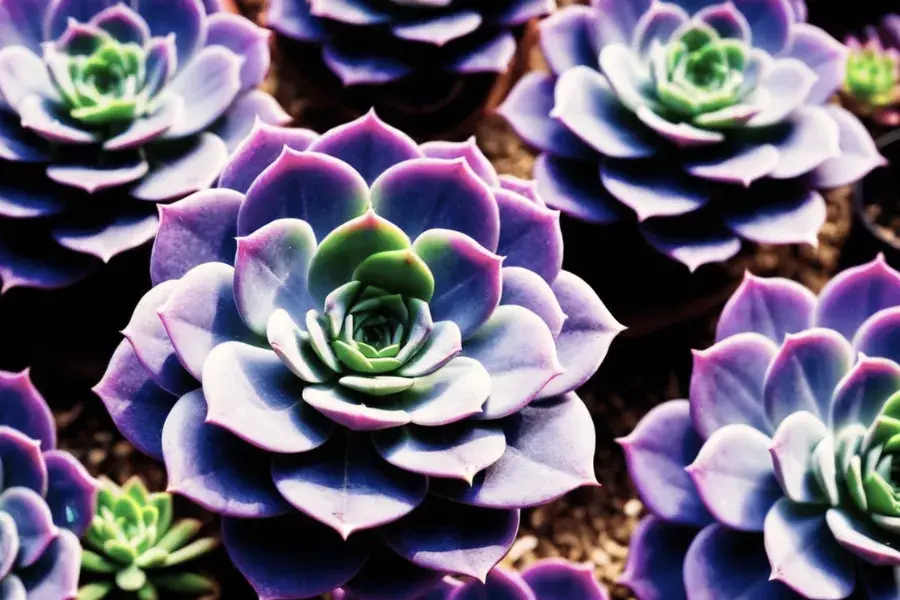
Frequently Asked Questions about Purple Succulents
As we dive deeper into the enchanting world of purple succulents, it’s only natural that questions arise. Let’s shed light on some frequently asked questions to guide you through the nuanced care and appreciation of these captivating botanical wonders.
1. Are Purple Succulents Hard to Care For?
Contrary to their vibrant appearance, purple succulents, like their green counterparts, are generally low-maintenance. Their drought-tolerant nature and resilience make them suitable for both beginners and experienced gardeners. By adhering to basic care guidelines, you can enjoy the beauty of purple succulents with ease.
2. Can I Grow Purple Succulents Indoors?
Absolutely! Many purple succulents thrive indoors, provided they receive sufficient sunlight. Place them near a south or west-facing window to ensure they get the light they need. Indoor environments can showcase the elegance of varieties like the Lavender Scallops Kalanchoe or Purple Ghost Echeveria.
3. Do Purple Succulents Attract Pests?
While succulents are generally hardy, they can attract common pests like aphids or mealybugs. Regularly inspect your plants, and if pests are present, consider natural remedies such as neem oil or insecticidal soap to maintain a healthy garden.
4. Can I Propagate Purple Succulents from Leaves?
Yes, many purple succulents can be propagated from leaves. Gently remove a healthy leaf, let it dry for a day or two, and then plant it in well-draining soil. With patience, you’ll witness the magic of new growth, allowing you to expand your succulent collection.
5. Are Purple Succulents Poisonous to Pets?
While succulents are generally non-toxic, it’s crucial to research each specific variety. Purple succulents, including the Purple Heart (Wandering Jew), are considered safe for pets. However, exercise caution and consult with a veterinarian if you have concerns about your furry friends interacting with these plants.
Conclusion
As we conclude our journey through the enchanting world of purple succulents, let’s reflect on the profound beauty and resilience these botanical wonders bring to our gardens. Each variety, from the elegant Aeonium Arboreum to the Echeveria Purple Pearl, has whispered tales of nature’s artistry, transforming landscapes into vibrant canvases.
Embracing purple succulents is not just about gardening; it’s about cultivating a connection with the sublime. These plants, with their regal hues and tenacious spirits, teach us valuable lessons in resilience and simplicity. They invite us to be custodians of living masterpieces, to nurture the elegance that nature so generously bestows upon us.
As you tend to your succulent companions, remember that each leaf is a brushstroke, and your garden is a canvas waiting to be painted anew with every season. The journey doesn’t end here; it continues with each sunrise and sunset, with each rainfall and drought. So, in the spirit of this enchanting odyssey, let your garden be a testament to the enduring beauty of purple succulents—a kaleidoscope of nature’s finest hues, an ever-unfolding masterpiece. Happy planting!